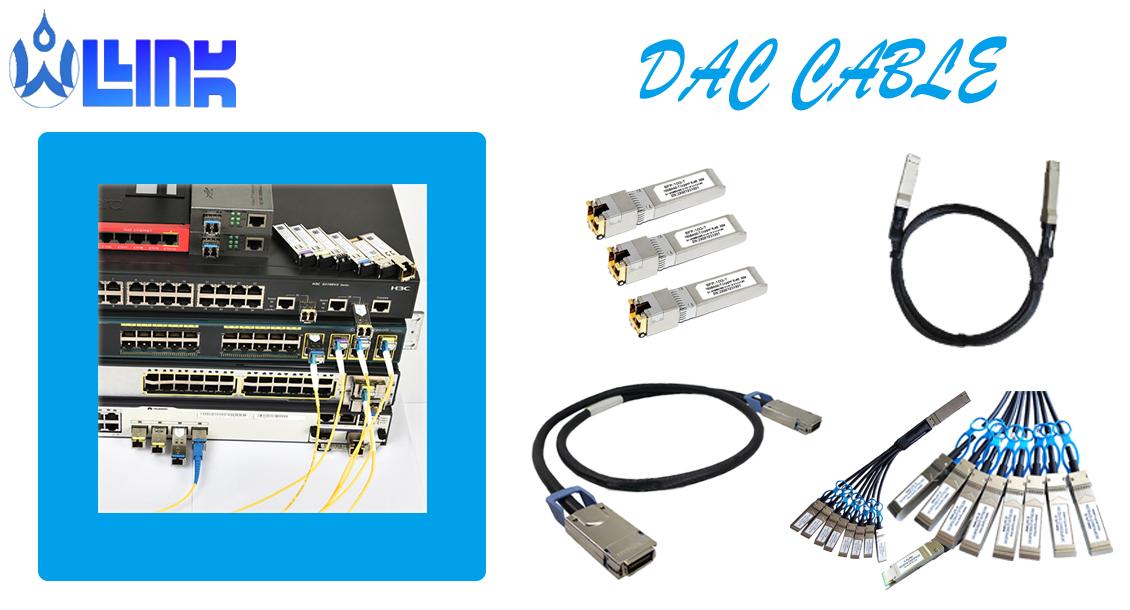A comprehensive introduction to multimode fiber jumpers and their selection methods
2021-08-18 16:41 admin
OM is that the abbreviation of optical multimode, which is translated as optical multimode, which suggests the grade standard of multimode fiber. thanks to the difference in core diameter, transmission speed and distance, it's divided into OM1, OM2, OM3, and OM4. Next, Olink Technology will introduce a multimode fiber jumper and therefore the strategy of selection.
The difference between OM1, OM2, OM3, OM4 fiber jumpers

(2) OM2 refers to 50um or 62.5um core diameter multimode fiber with 850/1300nm full injection bandwidth above 500/500MHz.km;
(3) OM3 could also be a 50um core diameter multimode fiber optimized by 850nm laser. In 10Gb/s Ethernet using 850nm VCSEL, the fiber transmission distance can reach 300m;
(4) OM4 is an upgraded version of multimode optical OM3 fiber, and also the fiber transmission distance can reach 550m.
OM3 and OM4 optical cables are usually utilized within the wiring environment of knowledge centers, supporting 10G or perhaps 40/100G high-speed Ethernet transmission.
(2) OM2: The inner core diameter and numerical aperture are relatively small, which effectively reduces the modal dispersion of the multimode fiber, significantly increases the bandwidth, and reduces the production cost by 1/3 compared to OM1;
(3) OM3: The flame-retardant skin is employed to forestall the spread of flame, prevent the emission of smoke, acid gas and poisonous gas, etc., and meet the wants of 10Gb/s transmission rate;
(4) OM4: Developed for VSCEL laser transmission, its effective bandwidth is over double that of OM3.
After we understand the difference between different multimode fiber jumpers, Olink Technology will introduce you some jumper selection techniques.
1. Choose the appropriate connector. The connector of the fiber jumper has LC/SC/ST/FC/MPO/MTP. If the interfaces at both ends of the device are identical, we are able to use LC-LC/SC-SC/MPO-MPO. If the interfaces at both ends of the device are different, we'll use The connection method of LC-SC/LC-ST/LC-FC.
2. Choose single-mode or multimode. Single-mode is especially used for long-distance transmission, and multimode is incredibly used for short-distance transmission. Generally, the colour of single-mode jumpers is yellow, and thus the colour of multimode jumpers is orange, lake blue, and purple.
3. Choose single fiber or dual fiber. The single-fiber jumper has just one wire connected by a bidirectional (BIDI) optical module. The dual-fiber is 2 jumpers side by side and connected by an everyday optical module.
4. Choose the length of the jumper. The length of the fiber jumper is typically 0.5m~50m, which is significantly determined by the space between the equipment so the equipment.
The difference between OM1, OM2, OM3, OM4 fiber jumpers

1. The parameters are different
(1) OM1 refers to 50um or 62.5um core diameter multimode fiber with 850/1300nm full injection bandwidth above 200/500MHz.km;(2) OM2 refers to 50um or 62.5um core diameter multimode fiber with 850/1300nm full injection bandwidth above 500/500MHz.km;
(3) OM3 could also be a 50um core diameter multimode fiber optimized by 850nm laser. In 10Gb/s Ethernet using 850nm VCSEL, the fiber transmission distance can reach 300m;
(4) OM4 is an upgraded version of multimode optical OM3 fiber, and also the fiber transmission distance can reach 550m.
2. Different uses
OM1 and OM2 are widely deployed in building applications for several years, supporting Ethernet network transmission with a maximum of 1GB;OM3 and OM4 optical cables are usually utilized within the wiring environment of knowledge centers, supporting 10G or perhaps 40/100G high-speed Ethernet transmission.
3. Different fiber design
OM1 and OM2 use LED (light-emitting diode) because the elemental light for transmission, while OM3 and OM4 are suitable for both LED and LD (laser diode) light transmission.4. The difference in transmission speed and bandwidth
The transmission speed and bandwidth of OM fiber patch cords are gradually increased, OM1<OM2<OM3<OM4.5. Different functions and features
(1) OM1: The inner core diameter and numerical aperture are relatively large, with solid bending resistance and light collection ability;(2) OM2: The inner core diameter and numerical aperture are relatively small, which effectively reduces the modal dispersion of the multimode fiber, significantly increases the bandwidth, and reduces the production cost by 1/3 compared to OM1;
(3) OM3: The flame-retardant skin is employed to forestall the spread of flame, prevent the emission of smoke, acid gas and poisonous gas, etc., and meet the wants of 10Gb/s transmission rate;
(4) OM4: Developed for VSCEL laser transmission, its effective bandwidth is over double that of OM3.
After we understand the difference between different multimode fiber jumpers, Olink Technology will introduce you some jumper selection techniques.
1. Choose the appropriate connector. The connector of the fiber jumper has LC/SC/ST/FC/MPO/MTP. If the interfaces at both ends of the device are identical, we are able to use LC-LC/SC-SC/MPO-MPO. If the interfaces at both ends of the device are different, we'll use The connection method of LC-SC/LC-ST/LC-FC.
2. Choose single-mode or multimode. Single-mode is especially used for long-distance transmission, and multimode is incredibly used for short-distance transmission. Generally, the colour of single-mode jumpers is yellow, and thus the colour of multimode jumpers is orange, lake blue, and purple.
3. Choose single fiber or dual fiber. The single-fiber jumper has just one wire connected by a bidirectional (BIDI) optical module. The dual-fiber is 2 jumpers side by side and connected by an everyday optical module.
4. Choose the length of the jumper. The length of the fiber jumper is typically 0.5m~50m, which is significantly determined by the space between the equipment so the equipment.